Emerging AWS Services You Should Know About in 2025
Sector: AI + Data
Author: Nisarg Mehta
Date Published: 05/20/2025

Contents
- Serverless Function Service Update (April 2025 GA)
- Serverless Function Service Update (May 2025)
- Continuous Integration Service Updates (Feb & Apr 2025)
- Data Analytics and Data Lakes (Dec 2024 launch)
- Cloud Security and Compliance (Dec 2024 GA)
- Enterprise Application Services (Dec 2024)
- Conclusion (Next Steps)
- FAQs
As AWS continues to lead the cloud computing market, it regularly launches new services and updates existing ones to help businesses innovate faster, reduce costs, and scale with confidence. In 2025, AWS introduced a wave of new services and major updates across AI/ML, serverless, DevOps, data analytics, security, and enterprise applications.
Whether you’re building your next-gen SaaS platform or modernizing enterprise systems, staying on top of these emerging AWS services can give your team a competitive edge. In this article, we’ll highlight the most impactful AWS services launched or enhanced in 2025—and explain how they can benefit your business.
1. Serverless Function Service Update (April 2025 GA)
Amazon Bedrock launched Prompt Caching in April 2025 to speed up foundation model queries and cut costs. It lets developers cache repetitive prompt context (e.g. long system instructions or example dialogs) instead of sending the full prompt each time.
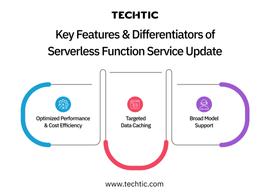
Key Features & Differentiators
- Reduced Latency & Cost: Cache reuse can slash inference latency by up to 85% and reduce token costs by ~90% for repeated prompt parts. This improves responsiveness for chatbots and other AI apps without extra model tuning.
- Selective Caching: Developers tag which prompt prefix to cache via the Bedrock API. The cached segment stays live for 5 minutes in an isolated, account-specific cache. Requests with a matching prefix get the speed/cost benefit automatically.
- Broad Model Support: Initially supports Anthropic Claude 3.5/3.7, Amazon Nova (Micro, Lite, Pro) and other models on Bedrock. Caching is seamlessly integrated—no infrastructure to manage.
Use Cases
Long-running conversational agents (customer service bots, virtual assistants) where the system or context prompt remains constant across turns. Also useful for applications providing many-shot examples or lengthy instructions to LLMs on each call (e.g. code generation with fixed guidelines), since caching avoids re-processing the static parts.
Pricing
Prompt caching is an optional feature of Bedrock’s on-demand usage. Cached token portions receive an automatic discount (up to 90% off normal rates). You are still billed for model inference, but the cached segments are heavily discounted, driving cost savings. No separate fee for enabling caching.
Integration
Part of Amazon Bedrock’s API – no new service to adopt, just a new parameter. Works with other Bedrock capabilities (e.g. Intelligent Prompt Routing and Bedrock-managed agents) and integrates into existing ML workflows. Developers can monitor cache hits and performance via Bedrock’s metrics and logs. It also integrates with Amazon SageMaker Studio, since Bedrock is accessible directly through the unified SageMaker Studio interface (enabling a smooth developer experience for generative AI).
2. Serverless Function Service Update (May 2025)
In May 2025, AWS Lambda introduced volume-tiered pricing for CloudWatch Logs and the ability to send Lambda logs to Amazon S3 or Kinesis Data Firehose. This update significantly lowers logging costs for high-volume serverless apps and offers more flexibility in log management.
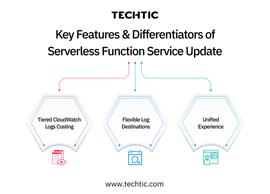
Key Features & Differentiators:
- Tiered CloudWatch Logs Pricing: Previously, all Lambda logs sent to CloudWatch were charged at a flat rate per GB. Now, pricing starts at $0.50/GB and drops through multiple tiers to $0.05/GB as volume increases. High-volume workloads benefit from automatic volume discounts with no user action needed.
- Alternate Log Destinations: Lambda can now natively ship logs to Amazon S3 or Kinesis Data Firehose(in addition to CloudWatch). Using S3/Firehose as a target further cuts costs — logging to these starts at $0.25/GB (with the same tiering down to $0.05/GB). This also enables direct integration with downstream analytics or SIEM tools (Firehose can pipe logs to Amazon OpenSearch, third-party providers, etc.).
- Unified Experience: The configuration is built into the Lambda console (“Edit logging configuration”). All functions still default to CloudWatch Logs, but you can switch to S3 or Firehose per function easily. The new log delivery uses a CloudWatch Logs Delivery mechanism that routes logs efficiently behind the scenes.
Use Cases
- Cost-sensitive serverless applications that generate large volumes of logs (e.g. verbose debug logging, high TPS APIs). Tiered pricing can drastically cut CloudWatch bills for these.
- Workloads needing to retain logs in durable storage or process them with custom analytics – for instance, exporting Lambda logs to an S3 data lake or through Firehose to an Elastic Stack. This removes the step of first going to CloudWatch and then exporting.
- Regulated industries that require all application logs in a centralized S3 bucket for compliance/auditing can now achieve that directly from Lambda.
Pricing
The new model is pay-as-you-go with automatic tiered rates. For CloudWatch: $0.50 per GB for the first 50 GB each month, then progressively cheaper to $0.05 at the highest volume tier. For S3/Firehose destinations: $0.25 per GB to start (also tiering to $0.05). These prices apply to log ingestion; standard storage pricing for S3 or any Firehose downstream (e.g. OpenSearch) also applies. There’s no extra charge for enabling the feature – it’s built into Lambda’s logging.
Integration
Fits into existing AWS Lambda workflows. Developers simply choose the log destination in the Lambda configuration. CloudWatch Logs integration remains, and now S3/Firehose integrate Lambda with services like Amazon S3 (for archival/analysis) and Firehose -> OpenSearch or third-party monitoring tools. The log routing follows the same pattern as other AWS compute services (like ECS) that allow direct S3/Firehose logging, bringing Lambda to parity. No code changes are required in Lambda functions; it’s an operational setting, so it works with any Lambda runtime or framework.
(Note: Another 2025 update to be aware of is that AWS Lambda standardized billing for the INIT phase (cold start) of functions, effective August 1, 2025. This means the initialization time now counts toward billed duration for all runtimes and memory sizes, aligning cost calculation consistently. Most users see minimal impact, but it’s worth noting for applications with very heavy cold starts.)
3. Continuous Integration Service Updates (Feb & Apr 2025)
AWS CodeBuild received two notable enhancements in early 2025: an interactive debugging environment (April 2025) and parallel test reporting improvements (February 2025). These updates boost developer productivity by making it easier to troubleshoot builds and speed up test suites.
A. Interactive Build Debugging (Apr 2025):
- What it Does: Allows you to “pause” a CodeBuild build in a sandbox for inspection. You can connect via SSH or your IDE to the build container while it’s running. This secure, isolated sandbox has a persistent file system during the session, so you can poke around the build environment, open logs, and even try fixes.
- Key Features: Investigate failed builds in real-time, test commands interactively, and validate fixes beforeupdating your buildspec or code. The sandboxed environment mirrors the normal CodeBuild VM (with same source, env vars, AWS access, etc.) ensuring accurate debugging. All AWS regions with CodeBuild support this.
- Use Cases: This is a game-changer for CI/CD troubleshooting – e.g., if a Maven build is failing in CodeBuild but not locally, you can launch a debug session to get shell access and diagnose environment issues. Or step through deployment scripts to find logic errors. It removes the trial-and-error of pushing new commits just to debug.
- Pricing: There is no separate charge for using the debug mode beyond the normal CodeBuild usage fees. You are essentially paying for the build minutes while the sandbox is active (standard CodeBuild per-minute rates apply, which vary by instance size). Turning on debug doesn’t incur a premium fee; it’s a built-in feature available in all pricing tiers.
- Integration: Works with all CodeBuild source providers (CodeCommit, GitHub, Bitbucket, GitLab, etc.) and build types. Since it’s part of CodeBuild, it naturally integrates with CodePipeline or other orchestrators that invoke CodeBuild. Developers can start a debugging session via AWS Console or CLI for a given build project.
B. Parallel Test Reports & Flexible Compute (Feb 2025):
- What it Does: Enables better scaling of test execution. CodeBuild can now run tests in parallel across multiple compute instances and then automatically merge the results into one report. Additionally, you can mix different compute types (on-demand instances, reserved fleets, even AWS Lambda for tests) in one build run.
- Key Features: Supports splitting a large test suite to run concurrently, which significantly reduces total testing time. After parallel execution, CodeBuild provides a unified report of all test results, making it seamless for devs to see the overall pass/fail status. The ability to choose compute options means you can optimize cost and speed (e.g., use spot instances or burst with Lambda where it makes sense).
- Use Cases: Projects with hundreds or thousands of tests (common in microservices or monolithic apps) can see much faster CI feedback. For example, running 5 groups of tests in parallel on 5 containers could cut a 30-minute test suite down to ~6 minutes. Teams can integrate this with their build pipelines to accelerate releases. The feature also helps utilize CI infrastructure efficiently, perhaps running quick tests on cheaper resources and heavier tests on larger instances automatically.
- Pricing: Parallel builds are charged as separate CodeBuild compute minutes for each concurrently running instance. However, because all instances run at once, wall-clock time drops. Merging reports has no extra fee. If using AWS Lambda as a test runner (new capability), you’d pay for Lambda invocations instead of build minutes for that portion. Overall, costs could decrease if it allows using smaller instances or shorter build times. Regular pricing for CodeBuild (per minute by instance size, or alternative compute pricing) applies for each parallel segment.
- Integration: This feature is part of CodeBuild’s project configuration. It integrates with the testing frameworks by consuming their reports (e.g., JUnit XML) and merging them. It can be triggered via CodePipeline or any CI flow that uses CodeBuild. Also, because it now supports AWS Lambda for tests, it blurs the line between CI and serverless – you might integrate with AWS Lambda’s cost model for ephemeral test execution. All regions that support CodeBuild have this feature, ensuring consistent behavior across your pipelines.
4. Data Analytics and Data Lakes (Dec 2024 launch)
Announced at re: Invent 2024 (generally available in 2025), Amazon SageMaker Lakehouse is a new solution that unifies data lakes and data warehouses for AI/ML. It allows you to analyze data across Amazon S3 (data lakes) and Amazon Redshift (warehouses) seamlessly in one environment. Think of it as an integrated “lakehouse” platform for analytics and machine learning, built into the SageMaker ecosystem.
What the Service Does
SageMaker Lakehouse addresses the challenge of siloed data by letting you query and manage data across S3 and Redshift without moving it. It leverages the open Apache Iceberg table format underneath, so you can use a variety of engines (Athena, Redshift, Spark, etc.) on the same data in place. It also provides fine-grained access controls and a unified catalog for data governance. This service essentially brings together data engineering, analytics, and ML in a single studio interface.
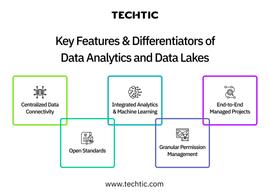
Key Features & Differentiators
- Unified Data Access: Define your data once and access it through multiple services. For example, you can have a table backed by S3 that Redshift Spectrum, Athena, and SageMaker notebooks can all query directly. No more maintaining separate copies or ETL pipelines – it’s a “zero ETL” approach for many scenarios.
- Open Standards (Apache Iceberg): Lakehouse uses Apache Iceberg as the table format, which means it supports ACID transactions and schema evolution on data in S3. Crucially, this open format means you’re not locked in – other tools can also read the data.
- Integrated Analytics & ML: Because Lakehouse is part of SageMaker’s next generation, you can easily run machine learning on your lakehouse data. Analysts and data scientists can collaborate in one SageMaker Studio environment – e.g., run an Athena SQL query on S3 data, then feed the result into a SageMaker ML model training – all in one place.
- Fine-Grained Access Control: Tied in with AWS Lake Formation and IAM, you can set column-level or row-level permissions consistently across your data lake and warehouse. This ensures compliance and security when multiple teams share data.
- Fully Managed Projects: Lakehouse introduces the concept of projects in SageMaker Studio that can include datasets, analytics queries, and ML notebooks together. This provides an end-to-end project space for a particular analytics/ML initiative.
Practical Use Cases
- Companies that have large datasets in S3 and also use Redshift for warehousing can avoid duplicating data. For instance, a data engineer can register Iceberg tables on S3, and analysts can query them with Redshift or Athena, then data scientists can use the same data in SageMaker for model training.
- Data Lakehouse for BI and AI: You can perform traditional BI analyses (using SQL) and advanced AI/ML on the same platform. E.g., run aggregations in SQL, then switch to a Jupyter notebook to do a predictive model on that data without exporting/importing.
- Simplifies architecture for industries like finance or healthcare that have data in various systems (CSV files in S3, operational data in Redshift). Lakehouse brings real-time analytics (via Redshift queries) and deep storage analytics (via lake queries) together.
Pricing
Amazon SageMaker Lakehouse itself is a feature set rather than a separately metered service. Pricing depends on the services you use under the hood: e.g., if you run Athena queries, you pay per TB scanned; if you spin up SageMaker Studio notebooks or Redshift clusters, those costs apply as normal. There may not be an extra charge just for enabling Lakehouse. However, there could be minimal charges for the Lake Formation catalog or Glue catalog usage. Essentially, you pay for the compute/queries you run (Athena, Redshift, EMR Spark, SageMaker, etc.) and storage for data in S3/Redshift. AWS has not introduced a new pricing dimension solely for Lakehouse – it’s about combining existing tools.
Integration
Lakehouse is deeply integrated with existing AWS analytics services: it uses AWS Glue Data Catalog and Lake Formation for metadata and permissions, Amazon Athena and Redshift for querying, EMR for Spark jobs, and SageMaker for ML. You access Lakehouse through the SageMaker Studio UI, CLI, or SDK, so users of SageMaker will find it familiar. It fits into AWS Lake Formation governance, meaning you can tag data and manage access centrally. It’s also accessible via APIs/SDKs, so developers can programmatically set up Lakehouse pipelines. Currently, it’s available in major regions (N. Virginia, Ohio, Oregon, Frankfurt, Ireland, London, Tokyo, etc. as of launch).
5. Cloud Security and Compliance (Dec 2024 GA)
AWS Security Incident Response (AWS SIR) is a new service, announced at re:Invent 2024, designed to help businesses prepare for, respond to, and recover from cybersecurity incidents. This is essentially a turnkey incident response service on AWS, combining automation, tooling, and human expertise to handle security events like breaches or ransomware attacks.
What the Service Does
AWS SIR provides continuous monitoring for threats, automates the initial investigation (triage) of security alerts, coordinates the response process, and gives customers on-demand access to AWS’s own security experts for hands-on help. It’s purpose-built to tackle complex, multi-stage incidents that can span across your AWS environment. For example, if GuardDuty flags suspicious activity, AWS SIR can automatically correlate related alerts, initiate incident workflows, isolate affected resources, and guide your team through remediation steps, with AWS’s incident response team available 24/7 to assist.
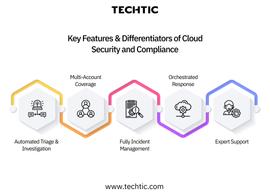
Key Features & Differentiators
- Automated Triage & Investigation: The service hooks into threat detection tools like Amazon GuardDuty and third-party sources via Security Hub. It uses runbooks and machine learning to automatically gather context on findings (for example, checking if an IAM key compromise alert is tied to unusual API calls across accounts). This reduces the manual burden on your security team by filtering out false positives and highlighting real threats.
- Orchestrated Response: AWS SIR includes pre-built response playbooks for common incident types (account takeover, data exfiltration, DDoS, etc.). It can automate tasks like quarantining an EC2 instance, rotating credentials, or blocking malicious IPs. It also facilitates communication – likely integrating with AWS Chatbot or email/SMS to notify the right people – and ensures all steps are documented.
- Expert Support (AWS CIRT): A standout feature is the direct line to the AWS Customer Incident Response Team. When you subscribe, you have 24/7 access to security experts at AWS who can provide guidance or even hands-on help during an incident. This is like having an on-call incident consultant; it’s especially valuable if your in-house team has limited experience with a certain attack.
- End-to-End Incident Management: The service isn’t just about reacting — it also includes preparation and post-incident analysis. It helps with incident response plan development, drills, and after-action reporting. In essence, AWS SIR covers the full incident lifecycle (prepare, detect, analyze, respond, recover) as a managed offering.
- Multi-Account Coverage: It can be enabled across multiple AWS accounts (like all accounts in an organization), aggregating security findings. This is important for large enterprises to have centralized incident management.
Use Cases
- Organizations lacking a dedicated or experienced security incident response team can outsource much of that function to AWS SIR. For a small company, AWS now effectively provides “response-as-a-service” for anything from compromised credentials to malware on an EC2 instance.
- Enterprises in regulated sectors (finance, healthcare) can use AWS SIR to bolster their incident response compliance. The service ensures that if an incident happens, there’s a documented, rapid response with expert involvement, which can aid in audits and reporting.
- During a widespread zero-day exploit or major ransomware outbreak, AWS SIR can act as an extension of your team to handle the surge in security alerts, automatically contain issues, and apply best practices learned from AWS’s global view of threats.
Pricing
AWS Security Incident Response is sold as a subscription with a tiered monthly fee based on your AWS spend. There’s a minimum of $7,000 per month, which covers up to $125k of monthly AWS usage (Tier 1). Beyond that, pricing is percentage-based: e.g., 5.0% of the next $125k usage (Tier 2), 3.5% of the next $250k (Tier 3), with the percentage decreasing at higher spend tiers. In practice, this is similar to an insurance or retainer model — larger AWS customers pay more since their potential incident scope is bigger. All features (automation, support, etc.) are included in that cost. There’s no long-term contract required (cancel anytime, per the Service Terms). This pricing means smaller orgs pay the flat $7k/month, while a very large enterprise with say $1M/month AWS usage would pay roughly $7k + 5% of $125k + 3.5% of $250k + 1.5% of $500k + 0.5% of remainder… etc., according to the published tiers.
Integration
AWS SIR natively integrates with AWS security services: it pulls in findings from GuardDuty, Amazon Inspector, Macie, Security Hub, etc., and can integrate third-party alerts via Security Hub’s API. It uses AWS Identity and Access Management (IAM) roles to execute response actions in your accounts. It also likely ties into AWS Organizations to cover multiple accounts. For communication, it can work with AWS Chatbot (Slack or Teams notifications) or AWS SNS for alerts. In terms of workflow, it complements existing incident processes – for example, it can create tickets in your ITSM (if integrated) or at least provide a timeline you can import. Since it’s a managed service, developers/devops don’t directly “call” it like an API in their apps; instead, your security team will interact with it via the AWS Console or CLI when configuring and during incidents. It essentially becomes part of your cloud operations playbook, alongside other compliance services like AWS Config or CloudTrail.
6. Enterprise Application Services (Dec 2024)
In late 2024, Amazon Connect (AWS’s contact center platform) rolled out a major update with Generative AI features, WhatsApp messaging integration, and improved data security for customer interactions. These enhancements help businesses provide smarter, more personalized customer service and reach customers on new channels, all while simplifying operations for contact center managers.
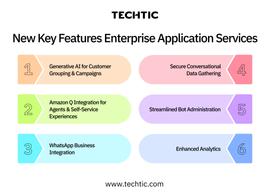
Key New Features (Dec 2024)
- Generative AI for Customer Segmentation & Campaigns: Amazon Connect now includes AI that can analyze contact center transcripts and customer data to create dynamic segments. For example, using a natural language prompt, a manager could ask Connect to “find customers who called about issue X and were dissatisfied” and then automatically create a follow-up campaign. The generative AI can also suggest campaign content. This allows non-technical users to leverage ML to target customers with precision (e.g. re-engage customers who had a negative support experience).
- Amazon Q for Agents and Self-Service: Amazon Q in Connect is a generative AI assistant integrated into the contact center. Initially, it helped live agents by suggesting answers. Now, it’s enhanced to also handle end-customer self-service in IVR and chat channels. This means customers interacting with a bot can get AI-generated answers that go beyond the rigid scripts of today’s IVRs. Q in Connect can pull information from knowledge bases or past cases to answer complex questions, while administrators set guardrails for accuracy. This reduces load on human agents and improves first-call resolution.
- WhatsApp Business Integration: Connect now natively supports WhatsApp as an omnichannel contact method. Businesses can engage customers over WhatsApp for support or notifications, alongside existing channels (voice, chat, SMS, Apple Business Chat, etc.). This is big because WhatsApp is a preferred channel in many regions – customers can contact support the same way they text friends, and agents handle it in Connect like any other chat.
- Secure Chat Data Collection: A new out-of-the-box capability for securely collecting sensitive data in chats. For example, if an agent needs to get a credit card number or social security number via chat, Connect can mask and handle that input in a PCI-compliant manner. This addresses a previous gap, making it safer to gather payment or personal info through a chatbot or agent, without resorting to a phone call.
- Simplified Bot Management: Amazon Connect now lets you build and manage chatbots (using Amazon Lex) directly in the Connect interface, with an improved UI. You don’t need AI experts – it provides guided tools and also the ability to enhance these bots with Amazon Q for more natural conversations. In short, creating and updating IVR or chatbots is much easier, point-and-click now.
- Enhanced Analytics (Contact Lens): The Contact Lens for Connect analytics add-on got new dashboards specifically for bot performance and conversational AI interactions. Managers can monitor how the AI-powered bots are performing (containment rate, customer sentiment, etc.) and even how often generative AI is being used in responses. Forecasting tools were also improved to compare intraday traffic vs. predictions, helping optimize staffing.
Use Cases & Benefits
- Customer Service Improvement: Enterprises can leverage these features to reduce wait times and improve support quality. E.g., a retail company can use generative AI bots to handle routine “Where is my order?” queries over WhatsApp instantly, freeing agents for complex issues. The secure data collection means even payments can be handled in-chat safely, streamlining the customer experience for things like bill payments or order placement.
- Marketing & Sales Outreach: The AI-driven segmentation and outbound campaigns enable contact centers to proactively reach out. For instance, a software company’s support center could automatically follow up with users who had an unresolved issue with a tailored message or offer, increasing retention. This turns a support center into a growth driver.
- Operational Efficiency: Contact center admins benefit from the simplified bot building and analytics. They can quickly tweak bot flows and immediately see the impact on containment or customer satisfaction via Contact Lens. The integration with common channels like WhatsApp means they don’t need separate tools or vendors to manage those – everything funnels through Connect, lowering overhead.
Pricing
All these features are available in all AWS regions where Connect operates, at launch. Pricing for Amazon Connect’s new capabilities follows the existing Connect model: you pay per minute of voice usage, per message for chat/WhatsApp, and per invocation for Lex or Amazon Q. For example, WhatsApp messages might be charged similarly to SMS pricing (or could involve WhatsApp’s fee structure). The generative AI (Amazon Q) usage is likely metered per request or per resolution session. Secure chat data capture doesn’t have an extra fee, but any associated Lex bot usage does. In summary, pricing is component-based: Amazon Connect per-hour pricing for voice, plus AI services pricing for Lex/Q, plus outbound messaging charges. There’s no substantial up-front cost; it’s pay-as-you-go per interaction. (Businesses should consult the Amazon Connect pricing page for specifics, as rates vary by feature—e.g., voice vs. chat, and region.)
Integration
Amazon Connect’s new features integrate with the broader AWS and business app ecosystem:
- CRM Integration: A notable addition is a Salesforce Service Cloud integration (in preview), where Amazon Connect can embed as the voice/chat solution inside Salesforce’s CRM. This means enterprises can use Connect as the backend, while agents work in Salesforce – a big win for those with Salesforce investments.
- AI Services: Connect uses Amazon Lex for NLP and now Amazon Q for generative AI, so it’s tightly integrated with AWS AI/ML services. It can also tap into Amazon Kendra or other knowledge bases for answering questions.
- Omnichannel: Besides the new WhatsApp channel, Connect already integrates voice (PSTN via Amazon Chime SDK), SMS, email, etc. The expansion to WhatsApp and likely other messaging apps means Connect can serve as a single hub. Those channels are integrated such that all transcripts and analytics funnel into Contact Lens (for a unified view).
- Security/Compliance: The secure data capture works with AWS Key Management Service and encryption to ensure sensitive data entered in a chat is not exposed. It likely integrates with Amazon Comprehend or custom vocabularies to identify sensitive information and mask it.
- Extensibility: Businesses can still extend Connect via AWS Lambda functions during contact flows (for custom logic) and use the Connect APIs to integrate with ticketing systems or databases. The 2025 enhancements don’t remove any existing integration points; they add more capabilities on top, which can be controlled via API/CLI as well.
Conclusion (Next Steps)
With these emerging AWS services and features in 2025, businesses have powerful new tools at their disposal – from cutting-edge AI/ML services that reduce costs and accelerate development, to serverless and DevOps improvements that streamline operations, to robust security and enterprise app integrations that enhance reliability and customer experience.
Companies, especially startups and enterprises in the U.S., should evaluate how these AWS innovations can be woven into their cloud strategy. The result can be faster time-to-value, lower TCO, and improved scalability for applications. Each service discussed above comes with extensive AWS documentation and is available for use today – be sure to check AWS’s official guides and pricing pages for more details and to get hands-on with these services in your AWS environment. (By staying current with AWS’s rapid evolution, you ensure your architecture leverages the latest and most efficient solutions the cloud has to offer.)
Being among the top AWS service providers, Techtic Solutions have been at the top of all these updates. We keep an eye on the newest releases and can help you leverage the latest AWS cloud infrastructure. Feel free to reach out to our experts for your cloud architecture needs.
FAQs
Q: What are the top AWS services for cloud solutions in 2025?
In 2025, AWS offers a comprehensive suite of services to address various cloud computing needs. Some of the top services include:
- Amazon EC2 (Elastic Compute Cloud): Provides scalable virtual servers for compute capacity.
- Amazon S3 (Simple Storage Service): Offers scalable and durable object storage.
- AWS Lambda: Enables serverless computing for running code in response to events.
- Amazon RDS (Relational Database Service): Simplifies database setup, operation, and scaling.
- Amazon VPC (Virtual Private Cloud): Allows provisioning of a logically isolated network.
- Amazon CloudWatch: Provides monitoring and observability of AWS resources.
- Amazon IAM (Identity and Access Management): Manages access to AWS services and resources securely.
- Amazon DynamoDB: Offers fast and flexible NoSQL database service.
- Amazon CloudFront: Delivers content with low latency and high transfer speeds.
These services collectively empower businesses to build, deploy, and manage applications effectively in the cloud.
Q: How can AWS services enhance eCommerce platforms?
AWS provides a robust infrastructure for eCommerce platforms, ensuring scalability, security, and performance. Key benefits include:
- Auto-Scaling: Automatically adjusts resources to handle varying traffic loads.
- Global Reach: Utilizes AWS’s global infrastructure to serve customers worldwide.
- Security: Offers built-in security features to protect customer data.
- Performance Optimization: Integrates with services like Amazon CloudFront for fast content delivery.
- Cost Efficiency: Pay-as-you-go pricing model reduces upfront costs.
These features enable eCommerce businesses to provide seamless shopping experiences to their customers.
Q: What is the role of AWS in AI and machine learning applications?
AWS offers a suite of AI and machine learning services to help businesses harness the power of data:
- Amazon SageMaker: Facilitates building, training, and deploying machine learning models.
- Amazon Rekognition: Provides image and video analysis capabilities.
- Amazon Polly: Converts text into lifelike speech.
- Amazon Lex: Builds conversational interfaces using voice and text.
- Amazon Comprehend: Extracts insights from text using natural language processing.
These services enable organizations to integrate AI capabilities into their applications, enhancing user experiences and operational efficiency.
Q: How does AWS support data analytics and big data processing?
AWS provides a range of services for data analytics and big data processing:
- Amazon Redshift: A fast, scalable data warehouse for big data analytics.
- Amazon EMR (Elastic MapReduce): Processes vast amounts of data quickly and cost-effectively across resizable clusters.
- Amazon Kinesis: Collects, processes, and analyzes real-time, streaming data.
- AWS Glue: A fully managed ETL service for preparing data for analytics.
- Amazon QuickSight: A scalable business intelligence service for visualizing data.
These tools enable businesses to derive actionable insights from their data, driving informed decision-making.
Q: What are the benefits of using AWS for cloud solutions?
Utilizing AWS for cloud solutions offers several advantages:
- Scalability: Easily scale resources up or down based on demand.
- Security: Comprehensive security features to protect data and applications.
- Cost-Effectiveness: Pay only for the resources you use, optimizing costs.
- Flexibility: Choose from a wide range of services to meet specific needs.
- Innovation: Access to the latest technologies and services to drive innovation.
These benefits make AWS a preferred choice for businesses looking to leverage cloud computing for their operations.



